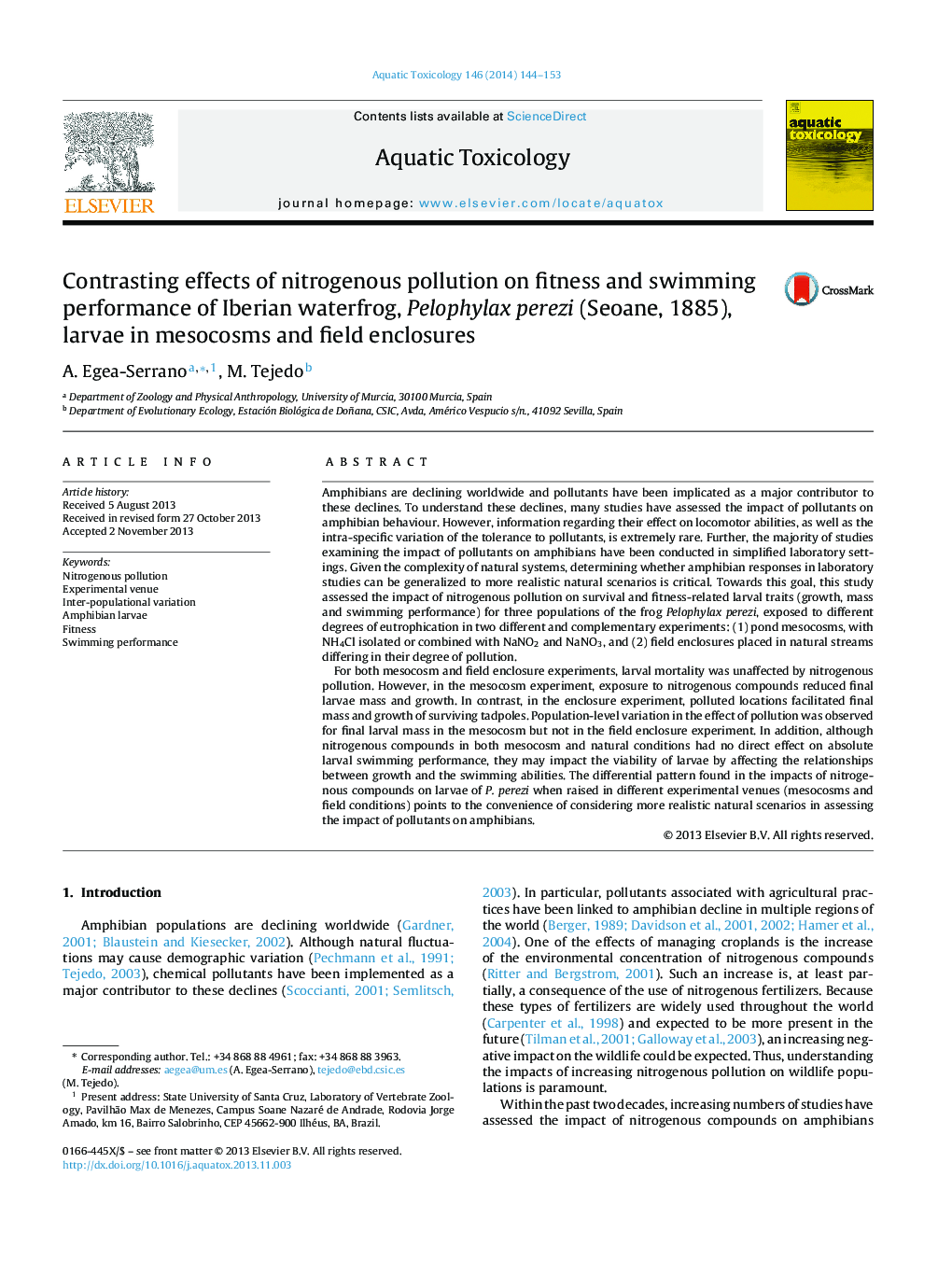| Article ID | Journal | Published Year | Pages | File Type |
|---|---|---|---|---|
| 6382621 | Aquatic Toxicology | 2014 | 10 Pages |
Abstract
For both mesocosm and field enclosure experiments, larval mortality was unaffected by nitrogenous pollution. However, in the mesocosm experiment, exposure to nitrogenous compounds reduced final larvae mass and growth. In contrast, in the enclosure experiment, polluted locations facilitated final mass and growth of surviving tadpoles. Population-level variation in the effect of pollution was observed for final larval mass in the mesocosm but not in the field enclosure experiment. In addition, although nitrogenous compounds in both mesocosm and natural conditions had no direct effect on absolute larval swimming performance, they may impact the viability of larvae by affecting the relationships between growth and the swimming abilities. The differential pattern found in the impacts of nitrogenous compounds on larvae of P. perezi when raised in different experimental venues (mesocosms and field conditions) points to the convenience of considering more realistic natural scenarios in assessing the impact of pollutants on amphibians.
Related Topics
Life Sciences
Agricultural and Biological Sciences
Aquatic Science
Authors
A. Egea-Serrano, M. Tejedo,
